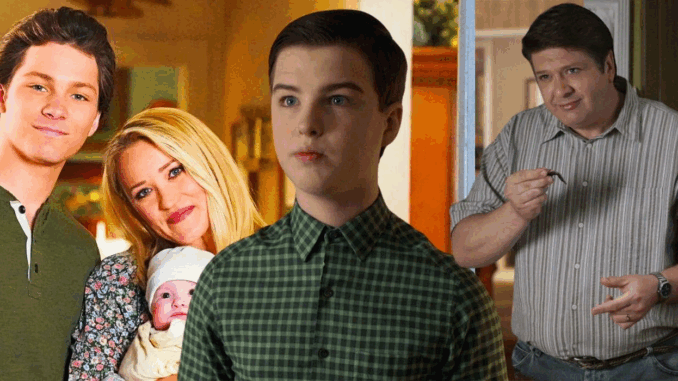
When you think of Young Sheldon, a few things instantly come to mind: quirky genius moments, heartfelt family dynamics, and of course—those legendary dinner table scenes. What seemed like simple, wholesome family moments were actually some of the most time-consuming scenes to shoot. Behind the laughter and home-cooked meals was a production process that tested everyone’s patience.
Let’s pull back the curtain and look at why filming these iconic scenes took so long, and what it really involved from the cast and crew.
The Hidden Complexity of Dinner Table Scenes
Why Were These Scenes So Challenging?
You’d think a family sitting down to eat would be one of the easiest scenes to film. It’s stationary, everyone’s seated, and dialogue flows naturally, right?
Well, not quite.
Dinner table scenes actually involve tons of moving parts—from camera angles to continuity—and the challenges only multiply with every added element.
Multiple Camera Angles = Multiple TakesEach Character Needs Their Own Shot
When six characters are seated around a table, every actor’s dialogue and reaction needs to be captured from multiple angles. That means filming the same lines over and over—first wide shots, then close-ups, then reaction shots.
The Camera Setup Takes Time
Switching camera positions isn’t a quick job. It involves adjusting lighting, focus, and audio for each new angle. It’s not just “point and shoot”—it’s “plan, light, reset, and then shoot.”Getting the Performances Just Right
Timing and Rhythm Matter
Comedy and drama both rely heavily on timing. The cast had to nail their cues perfectly, especially when overlapping lines or emotional beats were involved. Kids on Set Means Extra Regulations
Since some of the cast were minors (like Iain Armitage and Raegan Revord), filming hours were strictly limited. This often meant racing against the clock to wrap complex scenes.

Food on Set Isn’t Just a Prop
The Continuity Nightmare of Real Food
Yes, they used real food—and that caused major headaches for continuity. If an actor takes a bite in one shot, they have to do the exact same thing in every other take.
Meals Go Cold and Messy
After a few hours, food dries out, falls apart, or looks plain gross. The crew often had to replace dishes mid-scene to make sure everything looked consistent across takes.
One Scene Could Take an Entire Day
A 2-Minute Scene = 8 Hours of Filming
According to several cast interviews, dinner scenes could take half a day or more to complete. That’s a whole work shift for just a couple of minutes of screen ti
Cast Reflections on the Long Shoots
Iain Armitage Shares the Struggle
Iain once joked in an interview that he spent so much time at that dinner table, it started to feel like a second home—but without the comfort.
Annie Potts Revealed Her Secret Trick
Annie Potts (aka Meemaw) admitted to never actually eating the food during takes to avoid bloopers or stomach aches. Smart move, right?
The Editing Process Adds More Layers
Editors Work With Dozens of Takes
After filming, editors sift through hours of footage just to stitch together a smooth 2-minute scene. They match mouth movements, food placement, background noise—the works.
Attention to Detail = Big Payoff
Why the Hard Work Was Worth It
These dinner scenes helped anchor the show. They weren’t just filler—they were the emotional core of each episode. Every laugh, every awkward silence, every heartfelt moment happened here.
Director’s Perspective – A Constant Juggling Act
Balancing Tone, Dialogue, and Blocking
The director had to ensure every actor hit their mark, delivered lines with the right tone, and stayed perfectly aligned for continuity. It’s a tightrope walk every time.
Comparing to Other Sitcoms
Even ‘The Big Bang Theory’ Was Easier
Ironically, the parent show, The Big Bang Theory, had fewer ensemble scenes with this level of complexity. Most of its big conversations happened on couches—not around a table.
Fans Noticed the Effort
Social Media Reactions to the Table Scenes
On Twitter and Reddit, fans often pointed out how real those family dinners felt. That’s no accident—it’s the result of meticulous planning and long filming hours.
The Psychology of the Dinner Table
Why We Relate to These Scenes
Think about it: dinner is where real families hash things out. That’s where fights start, jokes land, and love is shown. These scenes felt familiar because they were familiar.
Conclusion
What looked like a simple, down-to-earth moment on Young Sheldon actually involved some of the most intricate and time-consuming work on the entire show. Between the technical logistics, child actor restrictions, and good ol’ fashioned food mess, those dinner scenes were a beast to shoot—but they paid off in a big way.
